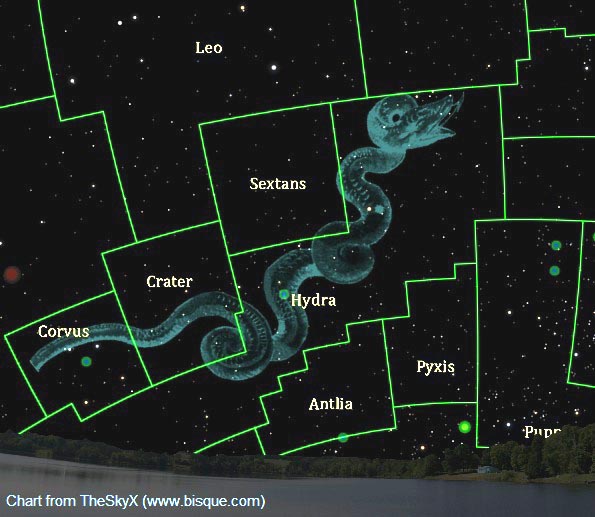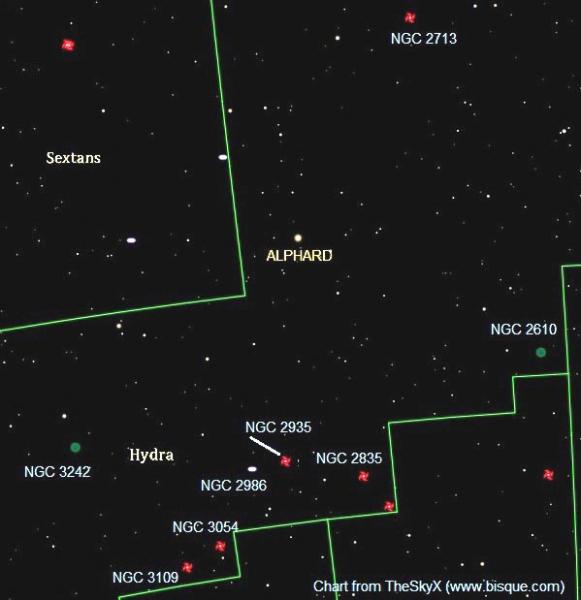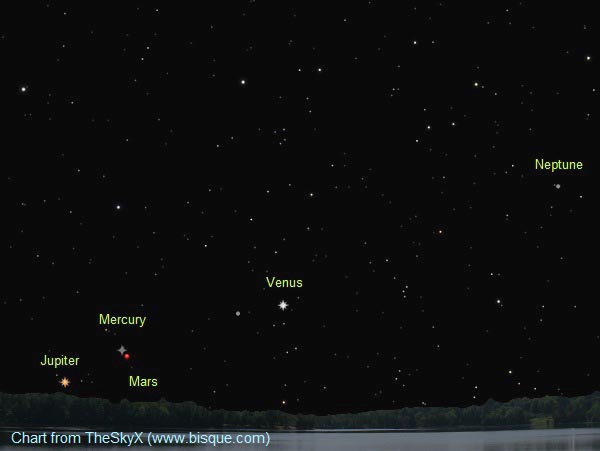The Serpent Rises
If you have had the chance to read a mythological story or two as they relate to the night sky, you would agree with some if not all are far fetched. They do make fine entertainment around the campfire though. Some of these stories take into account two, three or more constellations. One such tale involves the mighty Hercules. Of course, we know him as the strongest and most courageous of all. His brute strength not only helped him defeat Leo the Lion as well as Draco the Dragon, but he went on to his toughest challenge - Hydra the Water Serpent.
As the story goes, the Hydra which lived in the swamps near to the ancient city of Lerna in Argolis was a beast like no other. It possessed many heads with long necks that would grow back if severed. Hercules had his work cut out for him and after many hours of battle, only one head remained. That head was immortal and thus could never die.

In the true night sky, Hydra is the longest constellation around. The fact of the matter, it takes more than nine hours for the entire border region to rise above the southern horizon. Diagonally the constellation measures 104 arc minutes but the asterism of the serpent is about half that. In all, Hydra takes up 1,303 square degrees in area. Within this area are 232 NGC objects of which all are galaxies except a hand full of planetary nebulae and star clusters.
Few bright stars populate Hydra with the brightest being magnitude 2.16 Alphard. This is the only star that bears an Arabic name to which the name translates to “the solitary one”. Alphard is located 177 light-years from us and is pale orange in colour. This giant star is some 40 times larger than the Sun or measuring halfway to Mercury if it replaced our Sun.
The Ghost of Jupiter or Jupiter’s Ghost is catalogued as NGC 3242 and is a fantastic planetary nebula. Visually, it appears as a bluish-green diffuse object and registers around 9th magnitude. And a scope will reveal its fuzzy shape and colour but you will, however, need a large telescope to catch its outer portion. When on the meridian, NGC 3242 is about 25 arc minutes above the southern horizon as seen from southern Canada. NGC 3242 is estimated to be 3,000 light-years away and is roughly the same size as Jupiter – hence the name. Another gem of an example of a planetary nebula is NGC 2610. A bit of a challenge as the remains of this star glows around 13th magnitude and is a little less than an arc minute wide.

Looking a little farther – let's say 61 million years, we see NGC 2713. This elongated island of stars is listed at magnitude 11.9 and is a decent looking galaxy. In the eyepiece, it measures 3.6 by 1.5 arc minutes and has a slightly brighter thin arm on one side. Keep in mind 30 arc minutes equal the full moon.
NGC 2835 is larger than the previous galaxy and appears nearly face on. A little less than half the distance of NGC 2713, this 35 million light-year galaxy shows great dusty detail in its spiral arms with an arm extension off to the side. NGC 2835 measures 6.6 by 4.4 arc minutes and glows at magnitude 10.3.
At magnitude 11.9, NGC 2935 appears to be a perfectly angled face-on barred spiral galaxy that has a delicate S-shaped arm cutting through its center. This galaxy has a few pink pockets of nebulosity on its arms. Colour will only be seen when it is photographed. However, because of its southern location, you will need a bit of luck and a transparent sky to observe and image this 3.7 by 2.8 arc minute galaxy.
NGC 3054 is another barred spiral galaxy that possesses a decent structure in its arms. It is listed at magnitude 11.9 measures 3.8 by 2.4 arc minutes. This 35 million light-year galaxy sported a magnitude 17.2 supernova in late January of 2006.
On April 2nd the moon will be at apogee or it’s farthest in its elliptical orbit at 9 hours UT. At that point, our natural satellite will be
We start as the sky darkens with M77 – a difficult galaxy in Cetus. But there is no rest for the next few hours. Keep up the pace as you will be battling dawn before you know it in the east. As time marches on you will be pressured to look for the five final objects. There are globular clusters M15, M2, M72, the open cluster M73 and finally the elusive globular cluster M30. As the eastern horizon lightens, it is no longer your friend. My personal best was 85 objects. Good luck.
This weekend also sees the ringed planet Saturn at opposition. At this stage in any planetary orbit, the object rises at sunset. With the Sun, Earth and in this case, Saturn lined up on the same side of the Sun, the lord of the rings is closest to us and thus allowing the best views. You should, however, wait for the planet to climb nice and high in the sky to observe and image it. Otherwise peering through a thicker atmosphere closer to the horizon will result in a lot of turbulence.
The full pink moon occurs on the 17th of the month. No, the moon does not turn pink but that is what the full moon for April is called. The Farmer’s Almanac states: “This name came from the herb moss pink, or wild ground phlox, which is one of the earliest widespread flowers of the spring”. The night before, the moon will not be as close as it was in March but will be at 358,090 km at 6 hour UT.
Make sure you set the alarm clock before sunrise on the 19th to catch Jupiter, Mercury, Mars, Uranus and Venus in a lined up over 21 degrees of sky. Extend that figure to 49 degrees if you include Neptune farther west. The keynote on this date is Mercury will be a moon’s width above Mars. Both will be seen at a low power view in a telescope. Then on the morning of the 30th, Mars is above Jupiter at even a closer separation. Get those cameras ready.
And finally, the Lyrid meteor shower will only produce an estimated 20 meteors per hour on the night of the 22nd. Not a great shower but still – a shower.
Until next month, clear skies everyone.

